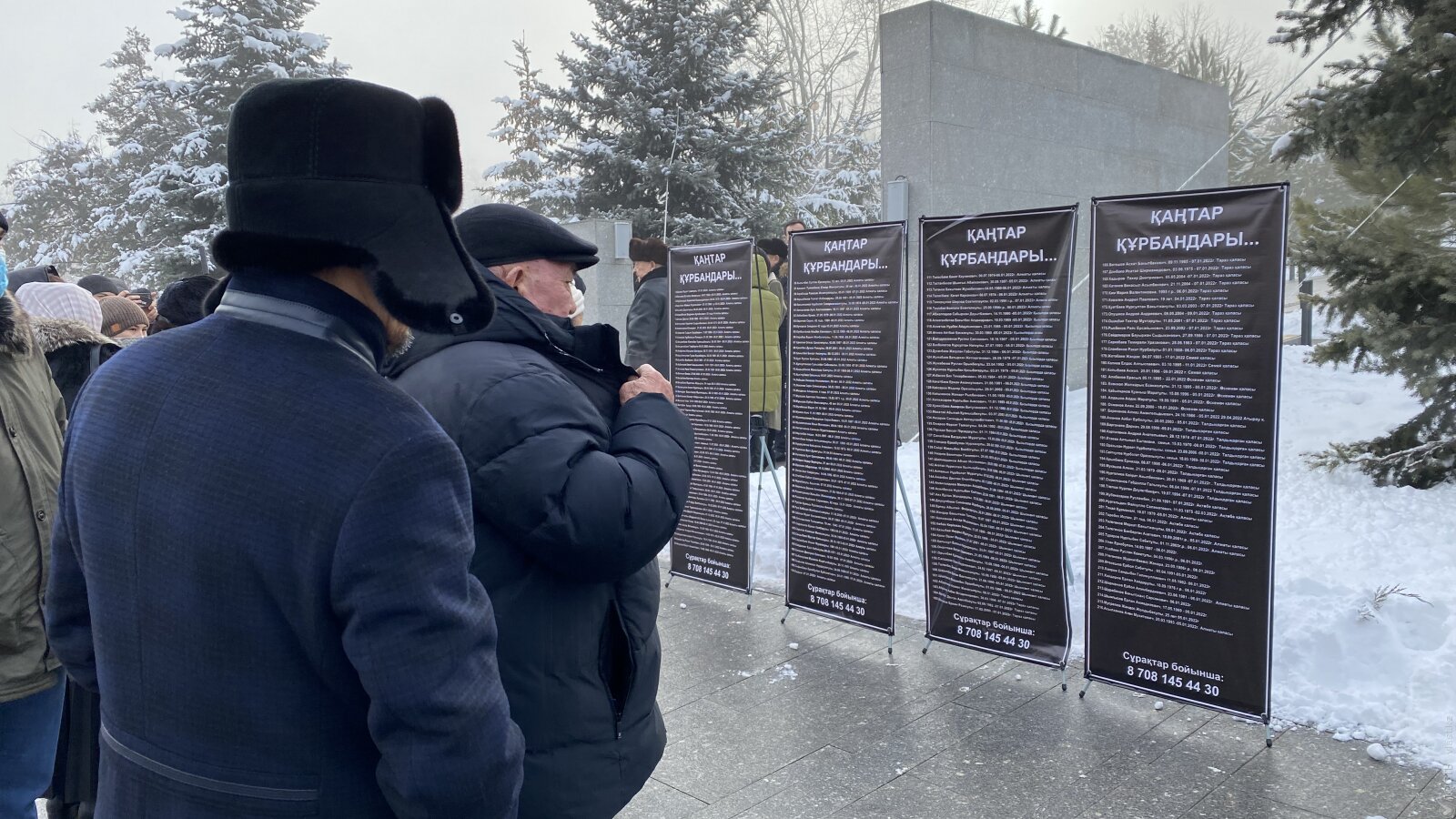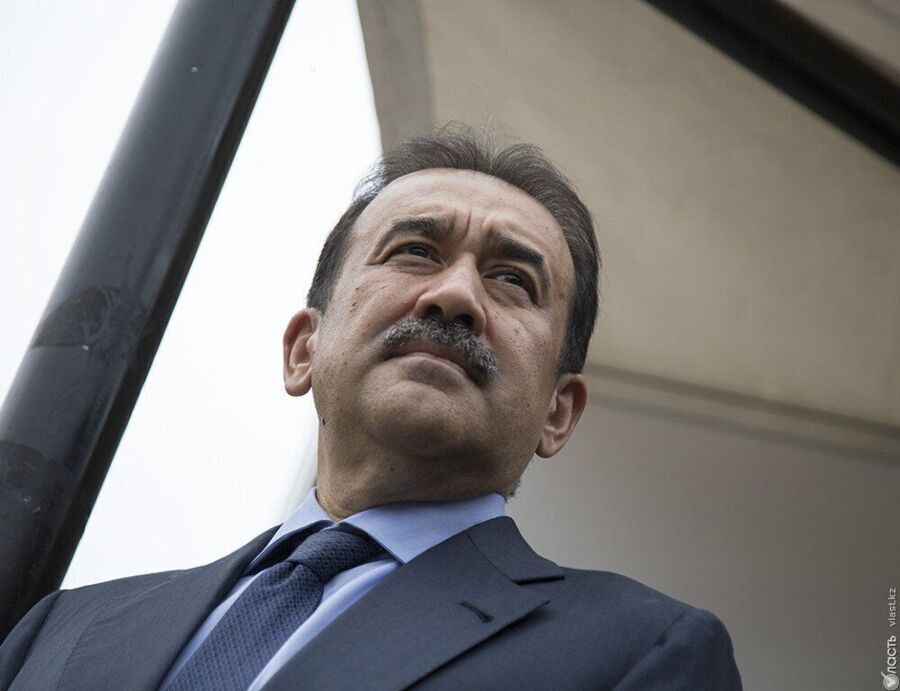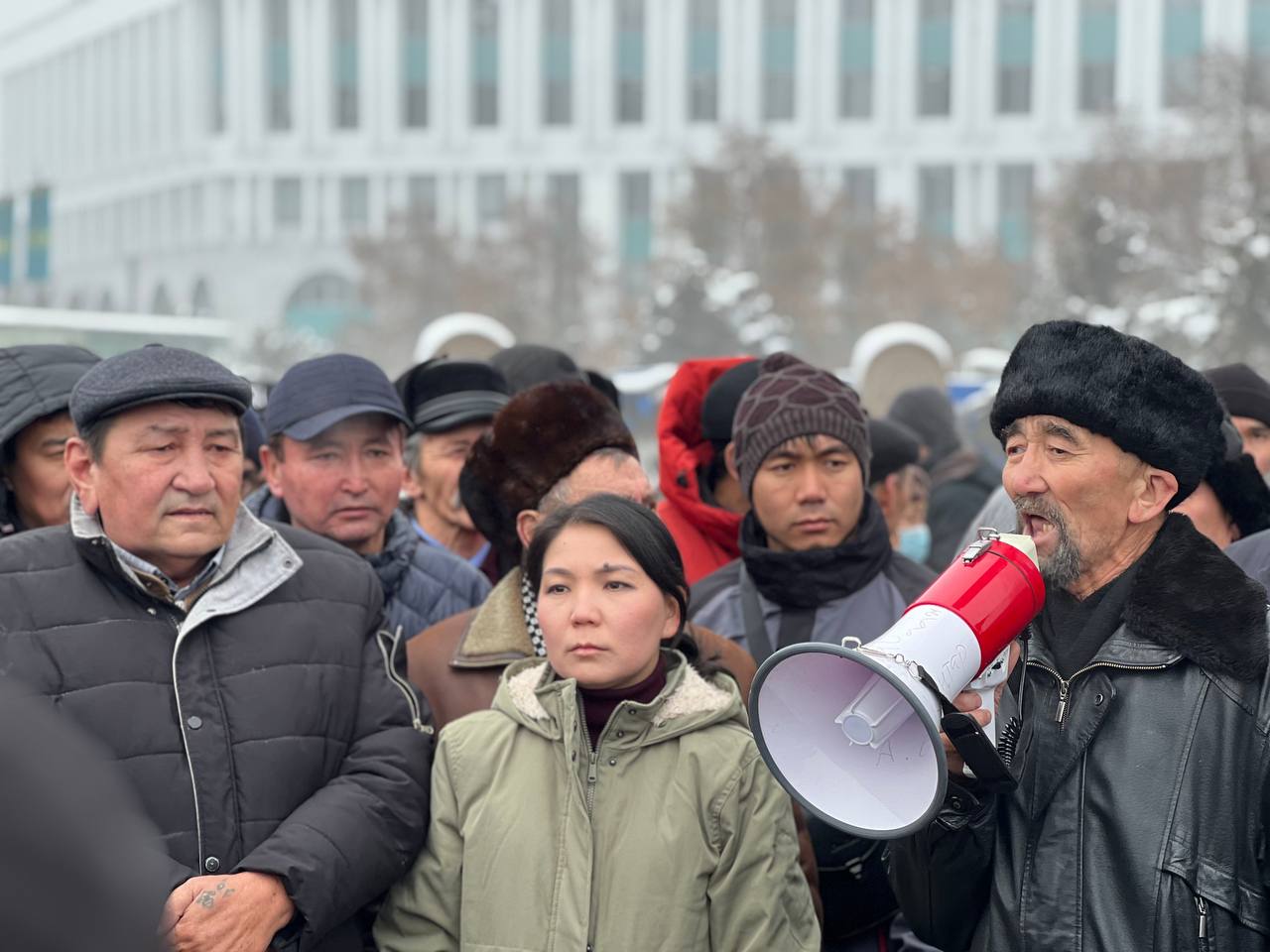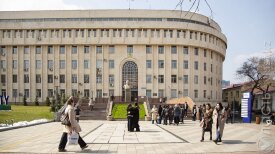On January 6 last year, the National Security Committee (NSC) said in a statement that Karim Massimov had been removed as chief. Two days later, another press release added that he had been arrested on suspicion of treason. Since then, a secret trial has taken place and now the General Prosecutor is calling him the “main organizer of the events leading to the attempted coup.”
Answering questions from Vlast on January 5, Berik Assylov confirmed that Massimov played a main role in the turmoil that became known as Bloody January (in Kazakh, “Qandy Qantar”).
“There were preparations for a coup d’etat. A criminal proceeding against the main organizers, the chiefs of the NSC, is underway,” Assylov said. Asked to confirm whether that meant that Massimov was indeed the main organizer, Assylov answered: “You can say so.”
Little was spoken regarding the ultimate objective of the coup, Massimov’s alleged accomplices, and the specifics of the action plan during the days of violent clashes in January 2022.
Massimov, 57, served as head of the NSC since 2016, when former President Nursultan Nazarbayev appointed him to this key security post, presumably in light of his preparation to resign. Massimov, in fact, helped control opposition movements and stifle protests, ensuring a smooth transition of power in March 2019, when Nazarbayev left his post to Kassym-Jomart Tokayev.
Having served twice as prime minister, head of the presidential administration, and minister, Massimov was one of the main figures in Nazarbayev’s power circle.
On 5 January 2022, law enforcement officials opened fire first against the people that had “attacked the presidential palace” behind the City Hall in Almaty, Assylov told the Parliament during a special session.
On 7 January 2022, Tokayev told the nation via the only accessible TV channels that he “had given the order to shoot without warning against the terrorists.” At the time, the official line was that Almaty had been taken by storm by 20,000 foreign-trained terrorists. This version was never verified and was soon abandoned.
Instead, the government began focusing its accusations on Massimov and his deputies. Samat Abish, Nazarbayev’s nephew and former official at the NSC, was also fired last January and is now being questioned by the prosecutor.
Asked whether Abish is under investigation, Assylov said that he is now being treated as a witness.
According to the prosecutor, a total of 18 people are under investigation for organizing the coup.
A Legal Counterattack
Without an independent investigation and with secret trials underway, it is difficult to independently assess what exactly happened during Qandy Qantar.
One year after law enforcement opened fire against peaceful protesters and violent rioters alike, Tokayev intends to set in stone one specific version of the truth: Certain people had a plan and he helped save the country.
At the January 5 Parliament session, Assylov clarified some points and was vague about other aspects of the events.
While he confirmed that the plot for a coup had been in the works for a whole year, Assylov denied that most details about the secret trial against Massimov could be released to the public, as these would pose a threat to national security.
Assylov also revived the “terrorist” story under a new guise: “Organized criminal groups were among the perpetrators. Some of them underwent radical training. They recruited people, garnered weapons, bought walkie-talkies and cars. The investigation established that some individuals working in law enforcement were in charge of this subversive work.”
One of the main actors in organized crime, according to the prosecution, was Arman Dzhumageldiyev, or “Wild Arman” as he is popularly known. His criminal faction, together with others, allegedly received orders from Massimov and was coordinated through the help of Kairat Kudaibergen, a former local deputy. Both Dzhumageldiyev and Kudaibergen are in pre-trial detention. Assylov also confirmed that 25 people were arrested as members of extremist movements and 42 were accused of being accomplices in organized crime groups.
Besides the NSC, the ministry of defense was also named as one of the main actors in the events. Former minister Murat Bektanov gave “illegal orders” and “abandoned key military facilities” according to Assylov.
Assylov argues that the coup organizers left on purpose weak defense lines and gave orders that facilitated the work of the rioters. The NSC and military forces aiming to defend the peace and security “were demoralized by the weakness of their chiefs,” according to the prosecutor.
Only One Truth
At a session of the lower chamber of Parliament on January 5, deputies discussed the latest developments in the investigation of Qandy Qantar.
Speaker Yerlan Koshanov said that the organizers manipulated the masses, who ended up following their plan “blindly”.
Members of a government-appointed “independent commission” were also present at the Parliament session.
Abzal Kuspan, a lawyer, toed the line of the full manipulation of the masses: “People were forced to go to the rallies,” he said.
Kuspan also pointed his finger against human rights organizations, which he believes acted as provocateurs in some instances.
“Their provocative actions can be traced not only during the January Events, but continue to take place to this day,” Kuspan said, without specifically mentioning the names of the organizations he accused.
The deputies concluded the session by calling for a clarification on the role of the organizers and the ultimate beneficiary of the coup.
Outside the parliament meeting room, the authorities had installed an exhibition of weapons seized from rioters during the January violence.
Still No Clarity
Officially, 238 people were killed during Qandy Qantar, including 19 law enforcement agents. Assylov confirmed that only 67 of the killed were labeled as “attackers,” that is perpetrators who actively attacked law enforcement or public buildings. The vast majority, 142, were killed for having violated the curfew that the government first imposed on the night of 5 January 2022.
Two lists of names were published on Republic Square in Almaty on January 5, during a series of commemorations of Qandy Qantar.
One commemoration, held near the newly-unveiled Tagzym Memorial, was organized and choreographed by the authorities, and featured some of the relatives of the victims and other participants that had clearly been instructed to be there.
Near the Independence Monument, a number of civic groups organized another commemoration, which was allowed despite lacking authorization. There, members of the unregistered Democratic Party, the civic movement El Tiregi, other activists, and family members of the victims spoke of the lack of closure with the tragedy, mourned the victims, and called for a transparent investigation of the crimes committed during those endless violent days and nights in Almaty and throughout the country.
The secrecy behind the trials, the quick dismissal of court cases through amnesties, and the unwillingness to admit any mistake in the management of the crisis, however, are all signs that the people of Kazakhstan will have to face a long wait if they intend to know what exactly happened.
Поддержите журналистику, которой доверяют.













